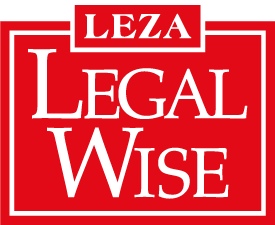Garnishee Applications
- A garnishee Application is an Application in which a successful plaintiff known as a judgment creditor makes an application to court to obtain the judgment debt or part of the judgment debt from the salary or from any source of income/funds from the defendant/ judgment debtor.
- A Garnishee application is appropriate when a judgement has been obtained and the defendant has not made payment. This is to say it is made within the same case, under the same case number.
- The Plaintiff can seek to get a judgment debt either in whole, if the plaintiff has information that the judgement debtor has the means to pay the debt immediately from any source that owes him/her money, or in monthly installments from the defendant’s salary.
Procedure
- Under the same case number, the plaintiff makes an application via notice of motion together with a founding affidavit and draft order.
- In the founding affidavit, the Applicant states to the court the background of the case, how judgement was obtained, the information they have regarding the source of funds, and what they seek from the court.
- The notice of motion and draft order set out the amounts to be claimed and the institutions they are to be claimed from.
- Usually, the application is filed as an ex parte application at the initial stages. This means that the application is made directly to the court without serving the judgement debtor. This is done so that the judgement debtor does not have notice of the application and potentially removes the funds from the account.
- The application is then enrolled for hearing and the Applicant will be granted a rule nisi, which is a temporary order of court. The effect of the rule nisi is to prevent the judgement debtor from removing the funds from his accounts.
- The judge will also give the Applicant a return date in which s/he is to serve the judgement debtor with the application and the rule nisi.
- On the return date, the judgement debtor is expected to file his/her papers and to come to court to explain to the court why the final garnishee order should not be granted.
- Usually, if the Applicant is aware of any funds in the judgement debtor’s account, the Bank will be cited in the application as a second Respondent.
- Note: In recent cases, the Banks will require Sheriff’s to provide a garnishee order in addition to a writ of execution to enable them to transfer the funds to them.
- If, on the day of the return date, the judge is of the opinion that no substantive response has been given by the judgement debtor, or that the response is not sufficient, the order will be granted for payment via garnishee, is to be paid in full or in installments.
Can a garnishee order be cancelled, amended or suspended?
- A court may on good cause shown, cancel or rescind, amend or suspend a garnishee order.
- If a debtor cannot maintain him or herself or his or her dependents after a garnishee order has been issued, the court may cancel or amend it in such a manner that the debtor, and his or her dependents, will have sufficient means to survive.
What happens when the debtor leaves the service of his/her employer?
- The judgment debtor must immediately advise the judgment creditor, in writing, of the name and address of his or her new employer.
- The judgment creditor must serve a certified copy of the garnishee order on the debtor’s new employer, with an affidavit specifying the payments received since the garnishee order was issued, the costs incurred and the outstanding balance.
- The old employer will be relieved of its payment obligations and the new employer is now bound to the garnishee order.
- If the debtor becomes self-employed, he or she must still comply with the garnishee order.
GLOSSARY
Ex Parte Application: an ex parte application in the context of a Garnishee order means that no notice is given by the judgment creditor to the judgment debtor or the third party or the garnishee at this stage, as this may lead to the third party or garnishee and judgment debtor entering into an arrangement in order to avoid making payment to the judgment creditor.
Garnishee: a third party who is served notice by a court to surrender money in settlement of a debt or claim.
Judgment Creditor: a judgment creditor is a party to which a debt is owed that has proved the debt in a legal proceeding and that is entitled to use judicial process to collect the debt. A creditor becomes a “judgment creditor” when a judgment is rendered stating that he or she is entitled to recover a particular debt from a judgment debtor.
Judgment Debtor: a judgment debtor is a person against whom a judgment ordering him or her to pay a sum of money has been obtained and remains unsatisfied.
How can LegalWise assist you?
Should you require an explanation of your rights on this topic, please contact your nearest LegalWise Branch, call, e-mail or WhatsApp us. For more information about our membership options visit our legal services page or visit our join now page.
